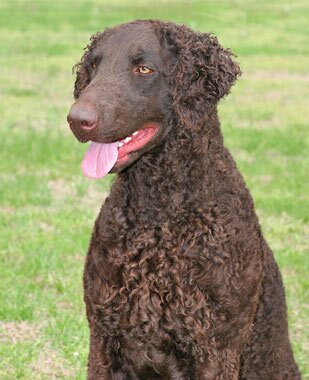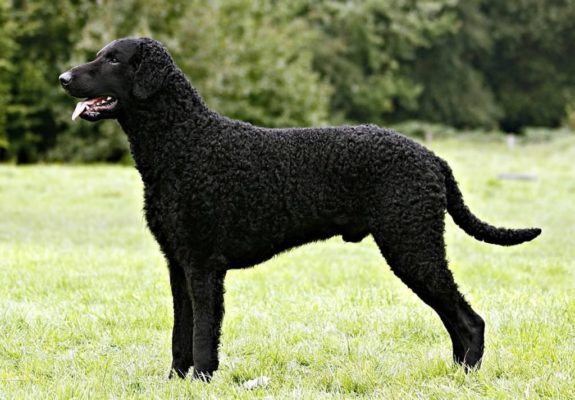Curly-coated Retriever
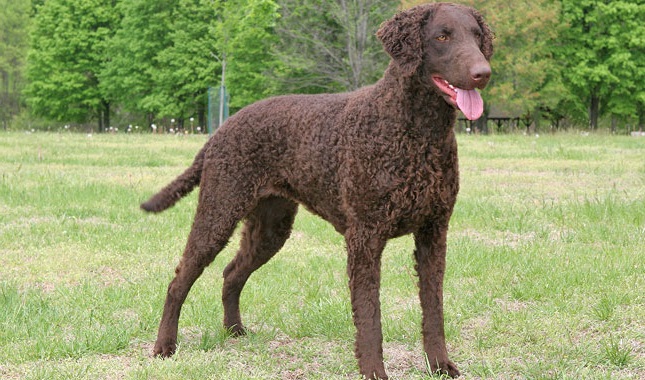
The Curly-coated Retriever is an intelligent and energetic dog with a calm disposition. The pet is devoted to its owner and loves all family members without exception. The retriever gets along great with children, provided he is appropriately treated. He will not tolerate pranks and insults to his address. The pet is friendly to other pets.
Table of Contents
Breed Information
| Another Name | – |
| Origin | United Kingdom – England |
| Height | Males 64-69 cm Females 58-64 cm |
| Weight | 23-41 kg |
| Fur | Short |
| Color | Black, liver |
| Lifespan | 9-14 years |
| FCI Classification | Retrievers – Flushing Dogs – Water Dogs |
| Group | Hunting dogs, dogs for children |
| Price | $600-1600 |
Breed Photos
Origin History
The Curly-coated Retriever resulted from a cross between the Newfoundland and the now extinct English Water Spaniel. It is also related to the Irish Water Spaniel and the Great Poodle. It is one of England’s oldest breeds and became popular in the 19th century.
In 1860 the retriever first participated in a show. In the early twentieth century, the breed was brought to Australia and New Zealand, where it found great popularity. The first standard for the breed appeared around the same time, in 1913. The Fédération Cynologique Internationale approved the official standard 41 years later. Today, the Curly-coated Retriever enjoys little popularity in Europe.
Appearance
The Curly-coated Retriever is a well-built, medium-sized dog. Its back is straight, and its abdomen is taut. The chest is deep, and the ribs are rounded. The neck is slightly curved, muscular, and of medium length. On it sits a head proportional to the body. The dog’s muzzle is cone-shaped, with a large nose. The eyes are oval, large. The ears are floppy, triangular.
The retriever has strong, straight limbs. The tail is long. The coat is short, dense, curly. The color is usually black or reddish-brown.
Character
The Curly-coated Retriever is an intelligent and energetic dog with a calm disposition. The pet is devoted to its owner and loves all family members without exception. The retriever gets along great with children, provided he is appropriately treated. He will not tolerate pranks and insults to his address. The pet is friendly to other pets. But to strangers who show wariness and mistrust, can bark loudly. Therefore, the dog will be a good guardian.
The Curly-coated Retriever is originally a hunting dog but can be used as a guide dog. The retriever also does a good job as a service dog in customs or the police.
Care
It is not a good decision to have a retriever in a city apartment. A dog needs a lot of space and walks to release accumulated energy. A freedom-loving hunter is better suited to a country house with a large plot.
A Curly-coated Retriever’s frizzy coat requires special care. It should be brushed daily with a massage brush. Shampoo should not be used more than once a month to not destroy the protective coating on the coat.
Training
An obedient Curly-coated Retriever is not hard to train. You’ll have to be responsible, though, because the four-legged dog will be stubborn. Early socialization is important for the dog. There’s no need to rush into training; train your dog diligently, give him time to think, and learn commands. If you’re constantly pushing and shouting at him, the dog will be stubborn, and then you won’t get the results you want. Training should be brief but varied and not boring. The dog needs to be constantly on the move, walk in the fresh air and do physical exercises.
Common Diseases
The Curly-coated Retriever has a strong immune system. However, prone to these hereditary diseases:
- hip dysplasia;
- epilepsy;
- cataract;
- progressive retinal atrophy;
- gastric dilatation.
Have your dog regularly examined by a veterinarian and vaccinated. Your dog’s eyes need special attention. Advanced retinal atrophy can lead to partial or complete blindness.
Nutrition
Proper nutrition is essential to your pet’s health. The retriever’s diet must be balanced. It should include natural products: meat, fish, dairy products. Also, do not forget about cereals, vegetables, greens. To dry food, the dog also treats positively. Combined nutrition is possible.
Adult dogs should be fed twice a day, puppies three to six times. It is important not to overfeed your pet to avoid obesity. Excess weight creates additional pressure on the joints, which can lead to dysplasia. Such foods as chicken, potatoes, pasta, smoked meats, pickles, and baked goods are contraindicated for Curly-coated Retriever.
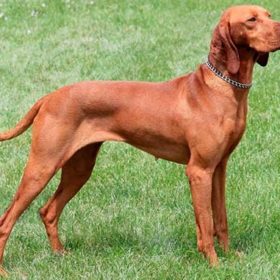 Vizsla
Vizsla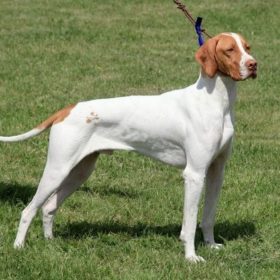 Braque Saint-Germain
Braque Saint-Germain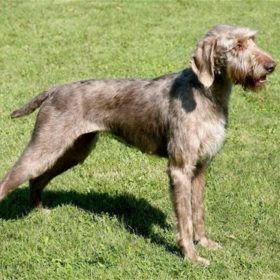 Slovak Rough-haired Pointer
Slovak Rough-haired Pointer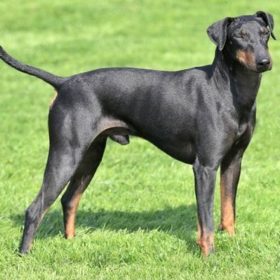 Manchester Terrier
Manchester Terrier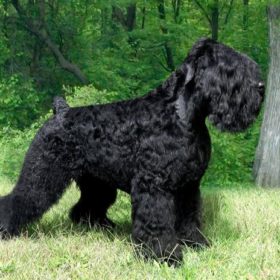 Black Russian Terrier
Black Russian Terrier Field Spaniel
Field Spaniel